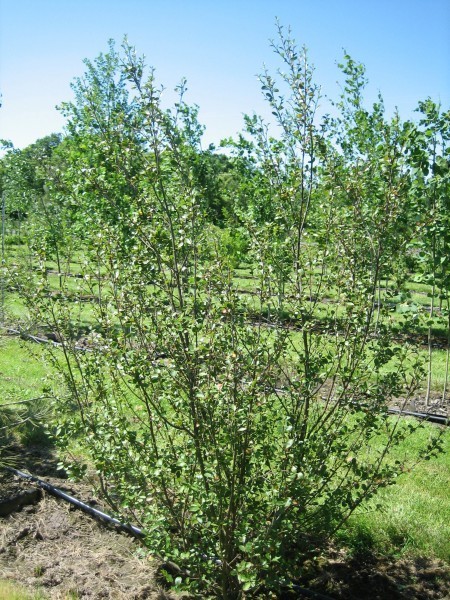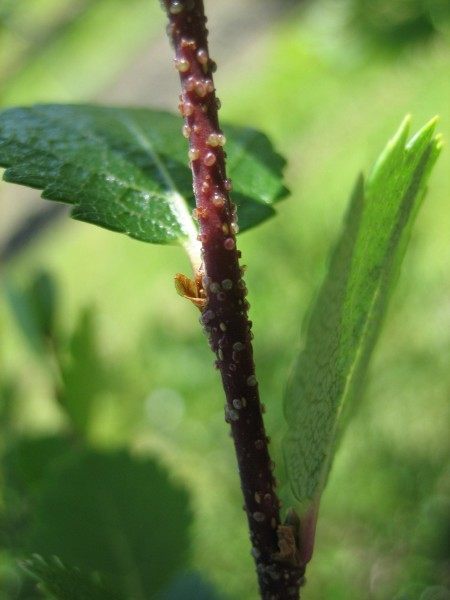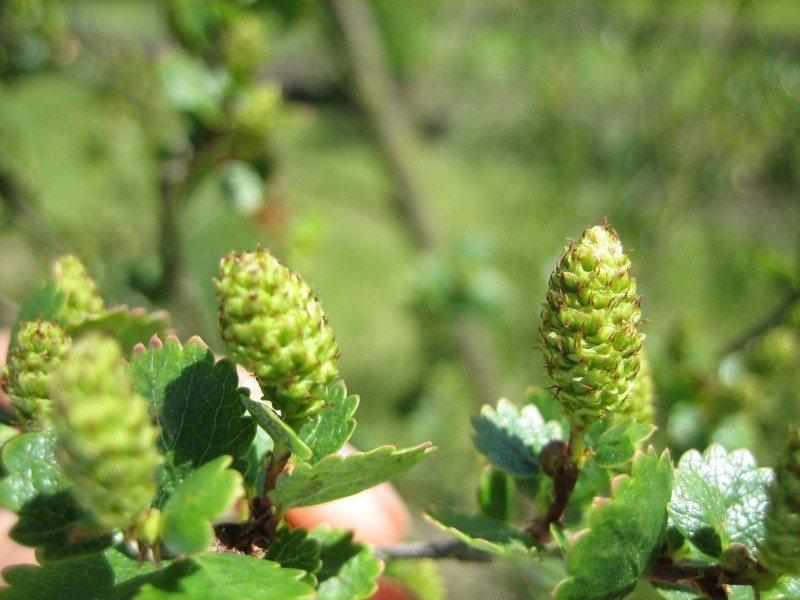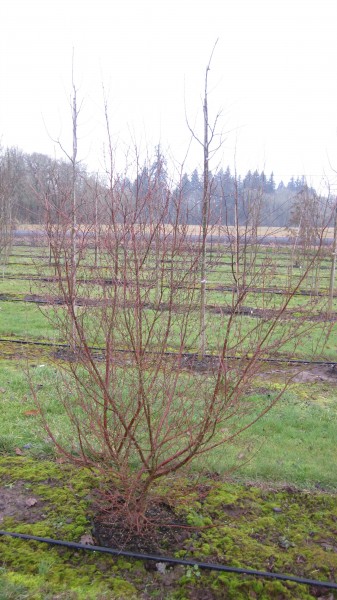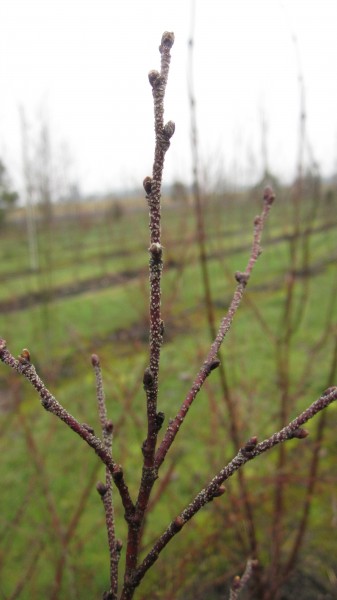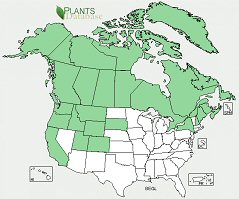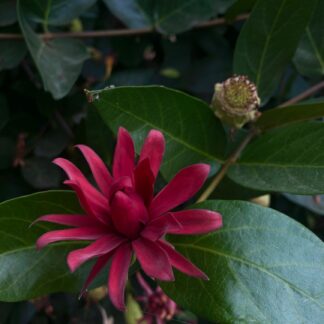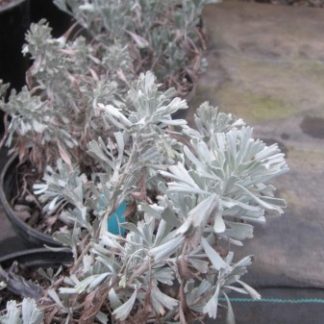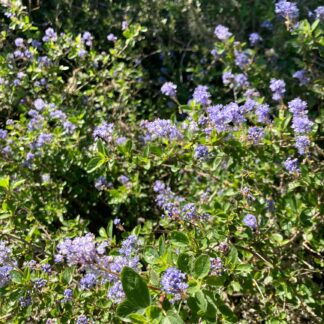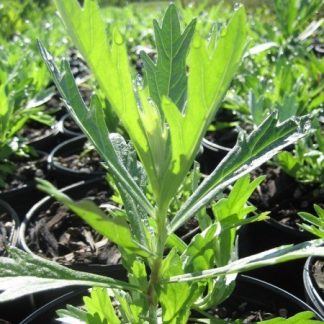Betula glandulosa
resin birch, bog birch
Habit: multi-stemmed shrub spreading from rhizomes and branch layering, often forming dense thickets. The dark brown bark is smooth and thin; twigs are bumpy with large resinous glands. The small leaves are thick and leathery and oval to nearly circular with rounded to outwardly toothed edges, also covered in resin glands. Both male and female catkins grow with or before leaf development from early to late spring. Fruits are narrow-winged, single-seeded samaras.
Ecology: it is typically a wetland species occurring most commonly on moist, acidic, and nutrient-poor organic sites including swamps, bogs, wet meadows, acidic rocky slopes and lake and stream margins at elevations from 1300-11,000 ft (400-3400 m). Betula glandulosa is tolerant of cold temperatures and grows abundantly over large areas of permafrost.
Growing Conditions: full sun to partial shade, moist soil.
Bog birch is a good wildlife habitat and food source. It’s extensive root system makes it a good candidate for preventing erosion. In the Willamette Valley we have noticed that Betula glandulosa leafs out in the spring and retains the leaves for a few months before dropping them, near the end of summer it will leaf out again and drop the leaves along with the other deciduous plants in the fall.
Specs
Deciduous Shrub
6-8 ft (2-3m)
10 ft (3m )
2-6

